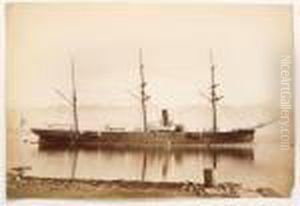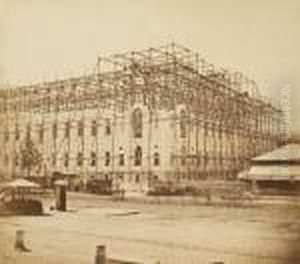Adolphe Terris Paintings
Adolphe Terris was a French photographer born in 1820 who made significant contributions to the early development of photography. Although not as widely recognized as some of his contemporaries, Terris played a vital role in documenting urban transformations and architecture, primarily in the city of Marseille, during the 19th century.
Terris began his career as a photographer after the invention of the daguerreotype process by Louis Daguerre in 1839 and the subsequent spread of photographic practices. At this time, photography was rapidly evolving, and many practitioners were experimenting with new techniques and subjects. Terris was particularly interested in capturing the built environment and the radical changes occurring in cities due to industrialization and urban planning.
Throughout his career, Terris produced a significant body of work that recorded the old quarters of Marseille before they were demolished to make way for modernization projects. His photographs serve as a valuable historical record of the city's appearance and social conditions during the mid to late 19th century. He was meticulous in his approach, often taking multiple images of the same subject from different angles and in varying light conditions to accurately document the structures and streets that were soon to be lost.
One of the hallmarks of Terris's work is the sense of stillness and clarity, with each image carefully composed to highlight the architectural details and urban landscape. His photographs were not only documentary in nature but also exhibited a keen artistic eye, emphasizing the interplay of light and shadow, the texture of the building materials, and the presence of people within the urban context, who often appear dwarfed by the surrounding architecture.
Adolphe Terris's contribution to photography extended beyond his own practice. He was involved in the local artistic community in Marseille and influenced other photographers and artists of the time. Despite his importance, much of his work remained relatively unknown until rediscoveries and reassessments in the late 20th and early 21st centuries shed new light on his photographs.
Terris passed away in 1900, but his legacy lives on through his photographs, which continue to be appreciated for their historical value and their artistry. His work provides an important visual account of 19th-century urban life and stands as a testament to the power of photography as a tool for documenting social and architectural history.

